Whale Transaction Impact Estimator
Estimate Whale Transaction Impact
Enter transaction details to see potential market impact based on real crypto market data
Estimated Market Impact
When a single wallet moves 500 Bitcoin in under a minute, the entire market holds its breath. Prices spike. Then they crash. Retail traders scramble to exit. And somewhere, a whale is quietly adjusting its position. This isn’t science fiction. It’s the daily reality of cryptocurrency markets in 2025.
What Exactly Is a Whale Wallet?
A whale wallet isn’t a special kind of wallet. It’s just a regular crypto address - the same kind you or I use - but with an insane amount of money in it. Think of it like a single bank account holding billions in cash. On Bitcoin, you’re generally considered a whale if you hold 1,000 BTC or more. That’s over $60 million at current prices. For Ethereum, it’s 10,000 ETH. For smaller coins like Solana or Shiba Inu, the thresholds are lower because the total supply is smaller - sometimes just a few hundred thousand tokens is enough to be called a whale. These wallets belong to a mix of people: ultra-rich individuals, hedge funds, crypto-native companies, and institutional players like BlackRock and MicroStrategy. Grayscale’s Bitcoin Trust alone held over 643,000 BTC as of November 2025. That’s more than 3% of all Bitcoin ever mined. The key thing to understand? Whale wallets don’t just sit there. They move. And when they move, the market reacts.How Whales Actually Move Prices
Crypto markets aren’t like the New York Stock Exchange. They’re thinner. Less liquid. Fewer buyers and sellers. That’s what makes whales so powerful. Imagine you’re trading a rare comic book. Only 10 people in the world own it. Now, one person decides to sell five of them at once. There aren’t enough buyers to absorb that supply. The price plummets. That’s exactly what happens in crypto when a whale dumps a large amount of coins. Here’s how it works in practice:- A whale sells 2,000 BTC on an exchange with low trading volume.
- The sell order floods the order book.
- Buyers panic. They see the price dropping fast and start selling too.
- Price drops 5%, 10%, even 20% in minutes.
- The whale buys back in at the lower price.
Whales Aren’t Always the Enemy
Not all whale activity is manipulation. In fact, many whale wallets are essential to the market’s survival. Whales provide liquidity. They’re the ones who buy when everyone else is selling. They’re the ones who step in during crashes and stabilize prices. CryptoQuant’s Q3 2025 report found that whale transactions made up 43.7% of all Bitcoin trading volume on major exchanges. Without them, the market would be far more volatile - and far less functional. Institutional whales like BlackRock’s Bitcoin ETF are especially important. They don’t trade on exchanges like individuals do. They move large amounts through structured products, which reduces sudden price shocks. Their presence brings legitimacy and attracts more capital into the space. Even individual whales can be signals. Nansen’s Chief Analytics Officer, Alex Svanevik, found that wallets with a history of buying low and holding long-term generate 68% higher returns than average traders over 12 months. Tracking these “smart money” wallets can help you anticipate trends - if you know how to read them.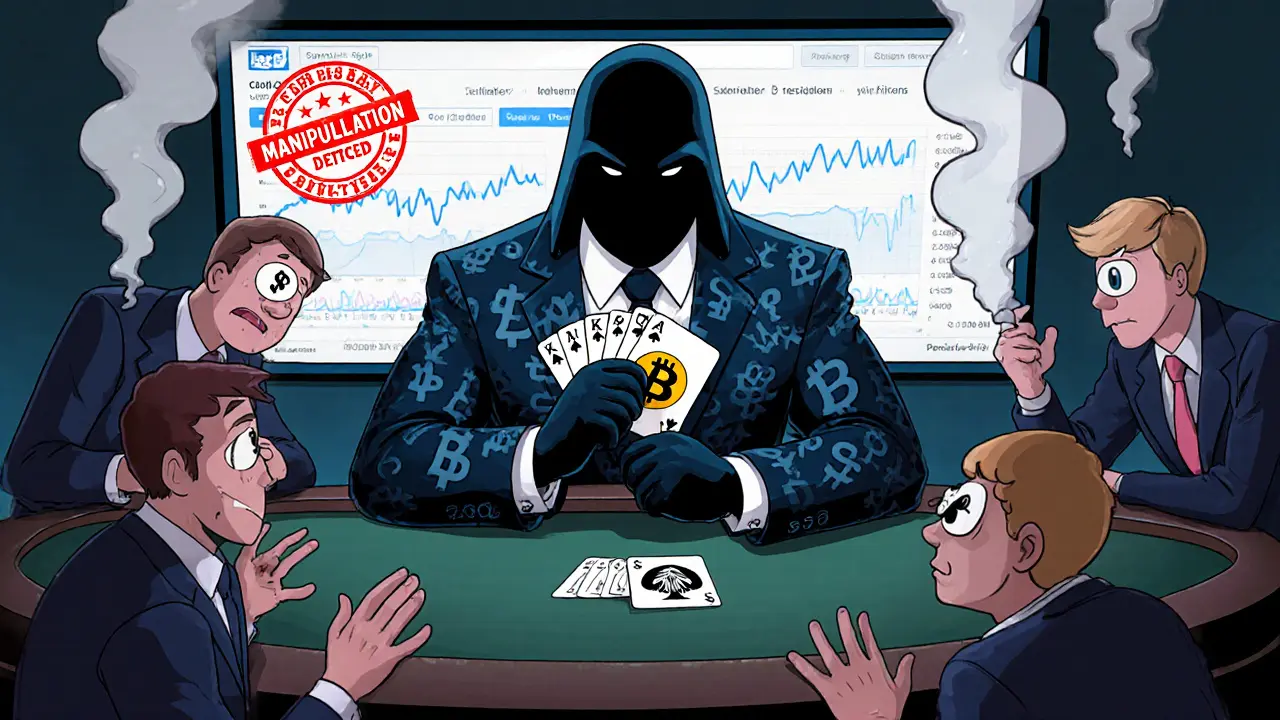
The Dark Side: Manipulation and Market Abuse
The problem isn’t size. It’s secrecy. Whales can buy, hold, and sell without revealing their intentions. They can place fake orders (called spoofing) to trick others into thinking demand is rising - then pull the orders and dump their holdings. They can trade with themselves (wash trading) to create the illusion of activity. The U.S. Securities and Exchange Commission fined three major exchanges in 2023 and again in August 2025 for enabling exactly these kinds of tactics, resulting in $1.2 billion in illicit profits. The lack of transparency is the biggest risk. Unlike traditional stocks, there’s no legal requirement in the U.S. for large crypto transactions to be reported. The EU’s MiCA rules now require exchanges to disclose transactions over €1 million, but the U.S. still doesn’t have similar rules. That creates a massive information gap. Retail traders are on the losing end. A Coincub survey of 5,000 traders found that 78% consider whale activity a major concern. 63% said they lost money directly because of whale movements. On Reddit, threads like “Whales destroyed my portfolio” have hundreds of posts from people who lost $500 to $50,000 in minutes. The most frustrating part? You can’t tell if a whale is accumulating (buying for the long term) or preparing to dump. 82% of retail traders can’t tell the difference. That’s why so many get caught in the crossfire.How to Track Whale Activity (Without Getting Rekt)
You don’t need to be a hedge fund to track whales. But you do need the right tools and patience. Here are the most reliable free and paid tools:- Whale Alert (Twitter/X): Real-time notifications of large transactions. 285,000+ followers. But beware: 18% of alerts are false positives (internal transfers, not market moves).
- Glassnode: Free public dashboards show Bitcoin whale accumulation trends. Look for sustained buying over weeks, not single spikes.
- Nansen: The gold standard. Tracks labeled wallets and identifies “smart money.” Their “Whale Intelligence 3.0” tool predicted Bitcoin’s 37% rally in Q3 2025 three days in advance. Costs $99/month.
- Etherscan and Blockchain.com: Free blockchain explorers. Use them to check wallet history. Is this address always buying? Or is it a known exchange wallet?
- Ignore single transactions. Look for patterns over days or weeks.
- Check if the wallet is moving coins to or from an exchange. Moving coins to an exchange often means selling. Moving coins from an exchange to a cold wallet usually means holding.
- Compare whale activity with exchange netflow. If whales are accumulating while exchanges are losing coins, that’s a bullish sign.
- Don’t chase. If you see a whale buy, wait 24-48 hours. Markets often overreact. Wait for confirmation.

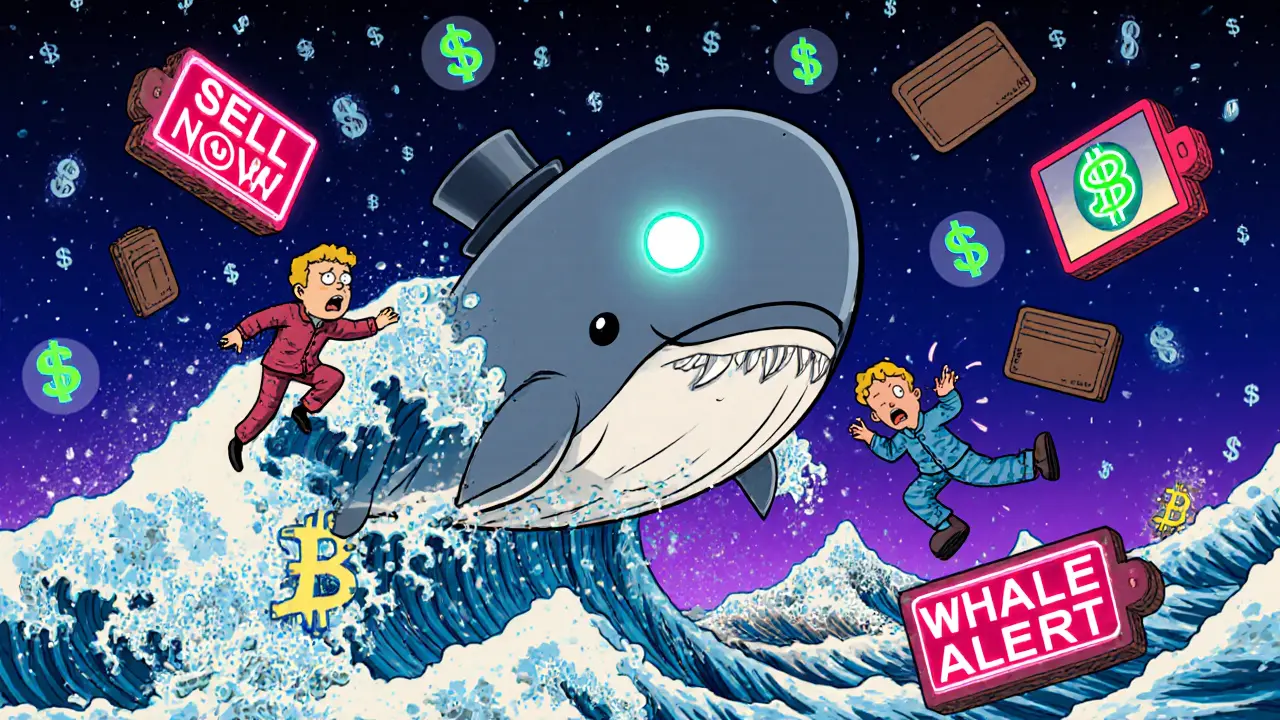
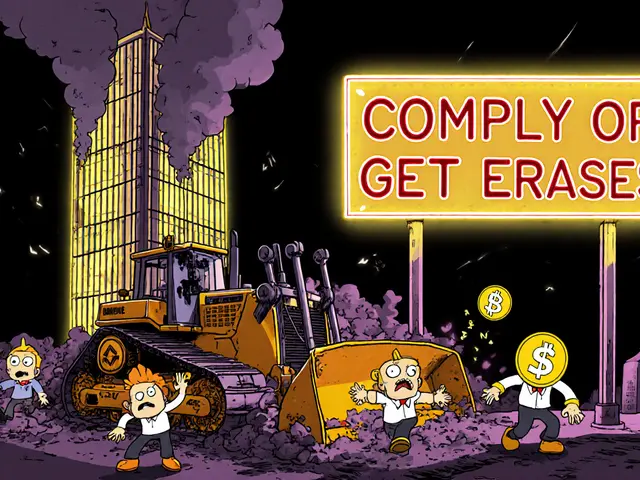
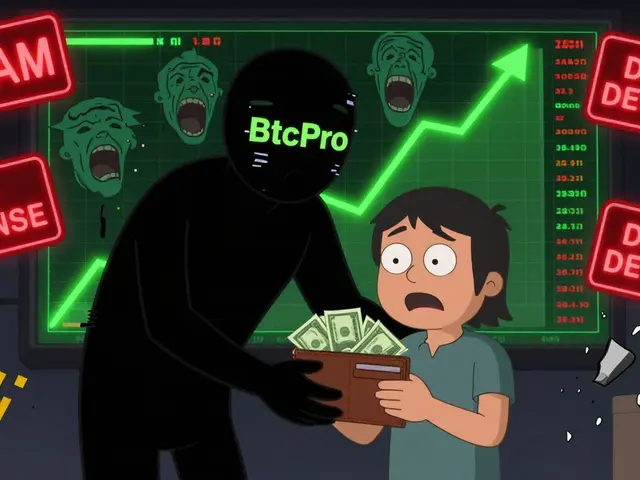
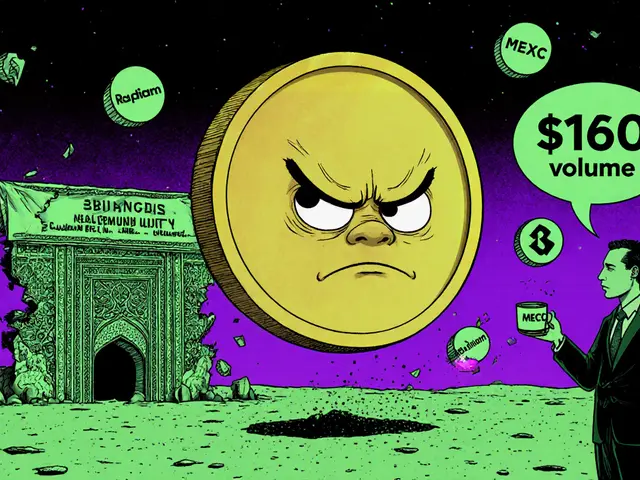
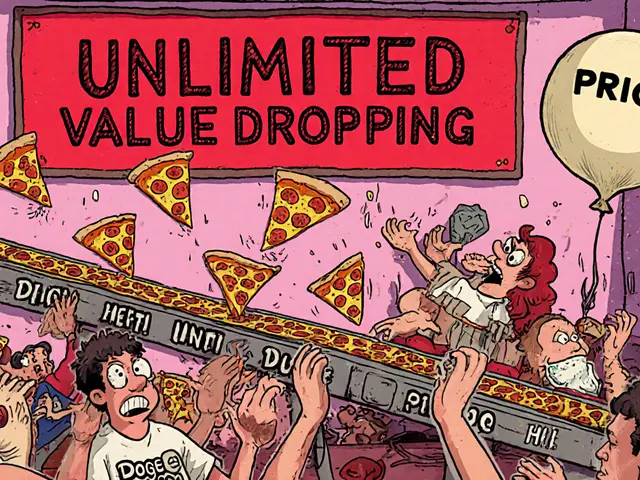

Andy Purvis
I've seen whales flip markets so fast my head spins. One day I'm up 30%, next day I'm wondering if I should sell my toaster to cover losses. No drama, just facts. Crypto's wild like that.